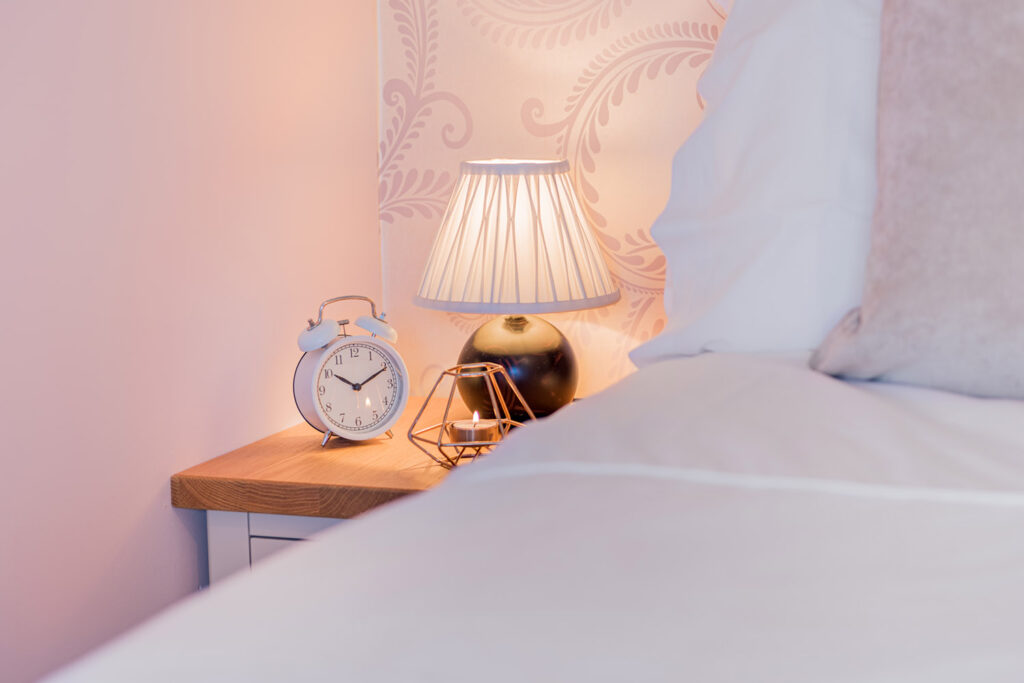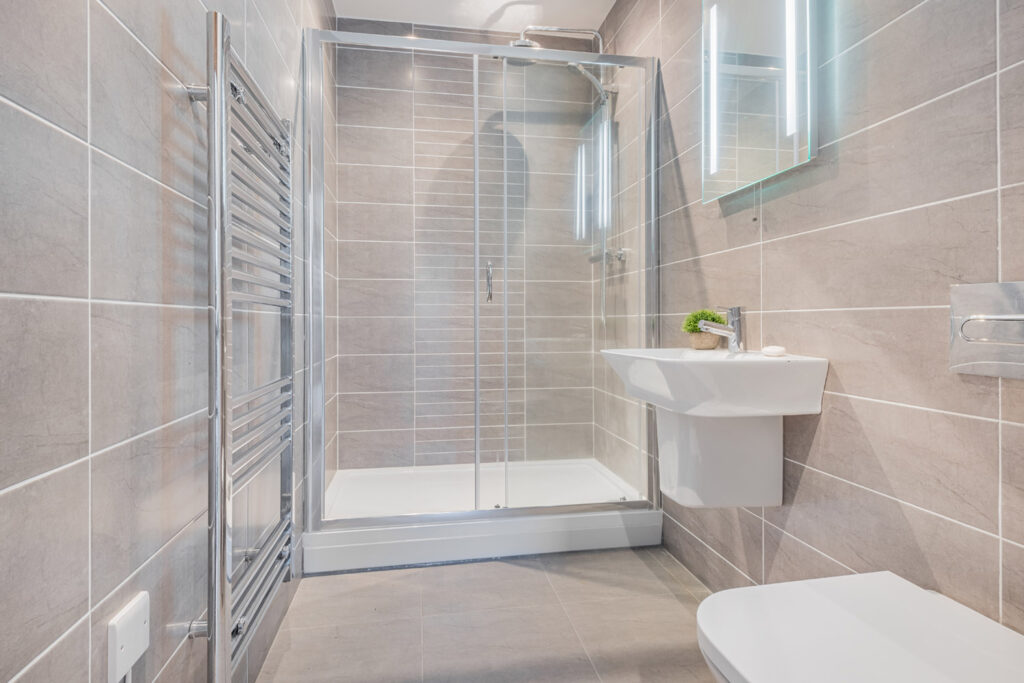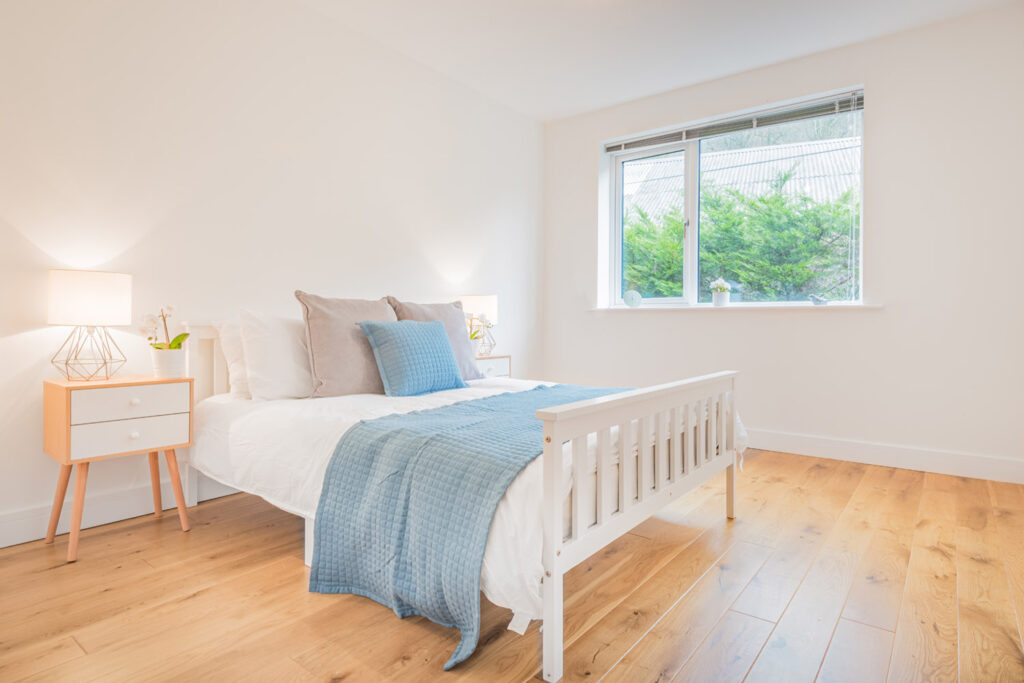Most tenants today aren’t looking for temporary digs, they’re looking for a home. And as the lettings market has grown, standards have gone up. So what does your property need to offer to make sure the best tenants are falling over each other to rent it?
The answer’s easy: find out what they expect and then go that bit further to edge your property ahead of the competition. What’s less easy is doing that while staying on budget!
One really important thing to keep in mind – especially if this is your first rental property – is that it’s not your own home. It’s very easy to get carried away when you’re choosing fittings, paint and furnishings and picking what you’d have yourself, and that hardly ever makes the most financial sense.

As a landlord, you’ve always got to think about the return you’re getting on your investment. So, when it comes to the look of your rental property, the trick is to balance the amount you spend on refurbishing and furnishing it with the amount of rent you can charge. And it’s not just about what it costs to do in the first place – you’ve also got to think about how much it’s going to cost for redecorating, repairing and replacing when needed.
Of course, the better your property looks, the more likely it is you’ll attract a good tenant that’s prepared to pay a bit more. So, the first thing to do is to speak to your agent about your target tenant type, find out what the general standard in the market is and see how much more rent you could charge for going over and above the ‘norm’.
Look online at other rentals in the area and aim to beat what they’re offering. And remember, your returns aren’t just about the level of monthly rent you can charge. A successful property investment also depends on protecting the capital value and keeping void periods and ongoing maintenance costs to an absolute minimum. In our experience, if a tenant sees that you really care about giving them the home they want, they tend to look after it, pay their rent on time and stay longer – so going the extra mile tends to benefit everyone.
Do be careful if you’re tempted to go over the ‘ceiling’ price for your type of rental. Tenants very quickly learn what they can expect to get for their money, so if you’re charging more than other similar properties, make sure you’re offering more.
Décor and fittings
Whatever level of finish you’re going for, your three checkpoints are:
- hard-wearing
- modern
- easy to keep clean.
Most tenants don’t need or want ‘fancy’, they just want a home that’s good quality and well maintained. So, make sure big-ticket items like kitchens and bathrooms are going to last well and won’t date any time soon, but keep the basic fixtures fairly simple. The more high-end you’re aiming for, the more you can spend on handles, taps, showers and other finishings.
If the basics are sound, you can then refresh the paintwork and furnishings more often to upgrade the overall look of the property.
Here’s a guide to getting those basics right:
Kitchens: Invest in sturdy base units, plain cupboard doors with strong soft-close hinges and hard-wearing counter tops that won’t show marks easily, like granite-effect laminate or stone composite. Put splashbacks behind the hob and sink and use specialist anti-mould paint in a light, neutral tone for the walls and ceiling.
Bathrooms: Go for a plain white suite with chrome furniture and invest in a really good shower, which is a tenant must-have. Fully tiling the walls and floor looks stylish and makes it easy to clean. In terms of colour, grey is a popular choice – it looks great against the white and tends to disguise any marks. If you’re aiming high-end, tenants will definitely be looking for an en-suite shower room.
Flooring: Having the same flooring throughout will help make the space flow better and look bigger, and you might be able to get a good deal on the price. Wood-effect flooring should last longer than carpet, but steer clear of cheap laminate, which tends to look low-budget and can get damaged easily. Colour-wise, marks are less likely to show if you choose mid to dark brown or grey.
Paint: For the walls, go light and neutral – something with a soft yellow, cream or beige base – and choose the colour from the standard range of a big brand. It’ll be reasonably priced, and when it’s time to touch up or redecorate, you’ll easily be able to buy more of the same. Paint the ceilings matt white and the woodwork in hardwearing white satin, which is a more attractive finish than gloss.

To furnish or not to furnish?
You might be surprised to hear that there’s not much difference in the rent between furnished and unfurnished properties – usually only around 5%. What’s more important is getting the right tenant, so find out from your agent what they’re likely to prefer.
For example, younger tenants and those only renting for a year or two often want furnished, but older couples and families might already have a lot of their own furniture and want something unfurnished or part-furnished.
The best thing is to be flexible, particularly if you’re looking for a long-term tenant – again, speak to your agent to work out what approach is going to be best. Even if you’re going for unfurnished, tenants these days do expect ‘white goods’ to be included, so be prepared to provide a washer/dryer, fridge/freezer, oven/hob and microwave. If you can include a dishwasher as well, even better. And there’s no need to spend a lot on these things, as even budget brand products last long enough these days to be a sensible investment.
Once you’ve got the decent-quality basics in place, think about the extras that tenants will appreciate. These days, everyone’s looking for a high-speed wireless broadband connection and satellite or cable TV; so, if you’re furnishing, include a smart TV. Consider a coffee machine and juicer/blender for the kitchen, and make sure there’s a decent vacuum cleaner, iron and ironing board.
And if it’s not a particularly big property, mirrors are your friend! They reflect light, give the illusion of space and can totally change the feel of a narrow hallway. For relatively little cost, you can really improve the impression the property makes.
Tip:You can save yourself a lot of time and effort by using a company that specialises in whole-property furniture packages for landlords. There are plenty of great ones out there, offering a variety of finishes for different budgets, and they can usually replace worn or damaged items quickly and with something very similar, if not the same.

Outside
Tenants are sometimes willing to pay extra for a garden or even a balcony. Just make sure it’s low maintenance and isn’t going to turn into a jungle! A flagstone or decked area with some basic garden furniture and a few potted plants looks great.
If you’re able to provide off-road parking and secure bike storage – even if it means sacrificing some of the garden – that will really help with the property’s appeal. The more security you can offer for tenants and their most valuable possessions, the more likely they are to choose your property.
Keeping the property looking good
Every rental suffers normal wear and tear over time, and the more different tenants you have, the more often you’ll need to freshen up the décor and furnishings to keep it looking good. If you tend to have shorter-term rentals of a year or less, you’ll probably need to repaint every couple of lets. But if you have a long-term tenant, you might only need to replace things when they’re getting worn out.
The traditional solution is to have a timescale and budget for redecoration and replacing furnishings, etc., so make sure you plan ahead and have a schedule in place from the start.
Another solution that’s becoming popular as more and more tenants are renting long term, is to let them redecorate themselves – as long as they don’t do anything too extreme! It can help make it feel more like their home and could be a good selling point for the let. Remember to make it clear in the tenancy agreement what they can and can’t do, and whether they need to check with you before repainting or making any new fixings.
Then, as long as you’ve agreed to the improvements they’re making, consider offering them a reduced rent for a few months to cover the cost. They get to update the property at their own convenience; you save time and effort organising and paying for the work.
Do remember that if a tenant causes damage or breaks something, they’re liable to pay for it – that’s not wear and tear. If there are any issues with getting them to pay, you should be able to take it out of their deposit at the end of the tenancy. And if it’s a significant cost, landlord insurance can cover you for both accidental and malicious damage.
It might sound like there’s a lot to think about, but as long as you’re prepared to be guided by tenant demand and have a good handle on your finances, it’s actually fairly straightforward. And putting in just a little extra effort can mean a quick let to a great tenant who’s going to look after your investment, perhaps for years to come.
To find out what’s going to get your rental property to the top of a tenant’s wish list today, or if you need a hand with budgeting and working out returns, get in touch – we’re here to help and would love to hear from you! Give us a call on 01256 830800 or email basingstoke.admin@belvoir.co.uk and one of the team will get right back to you.










